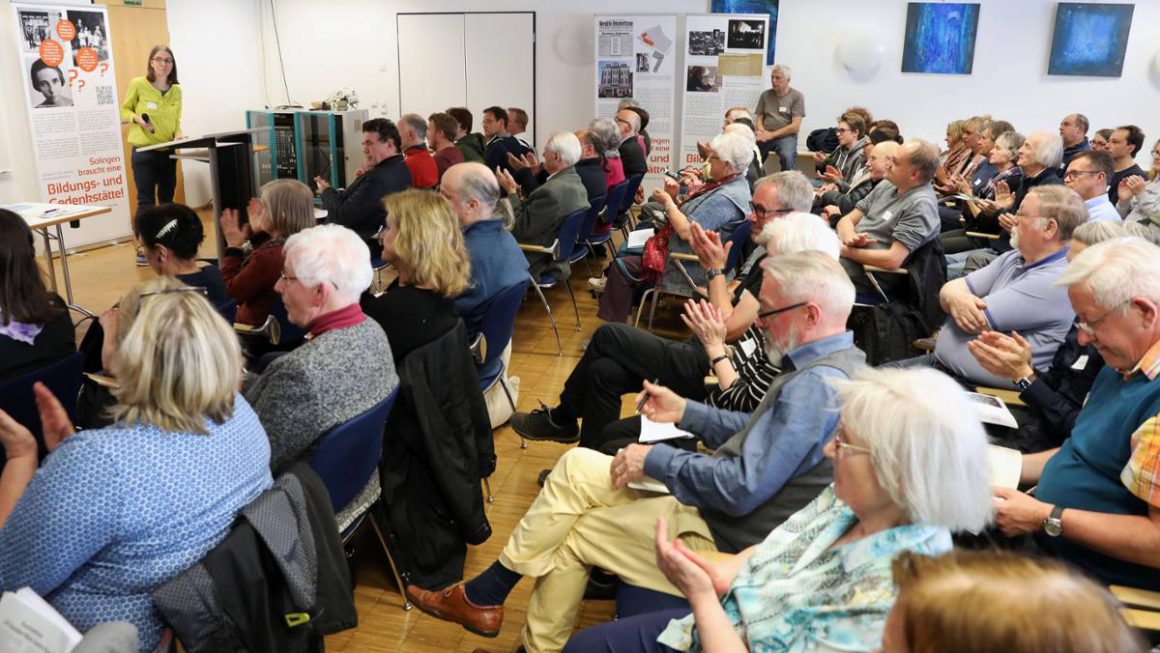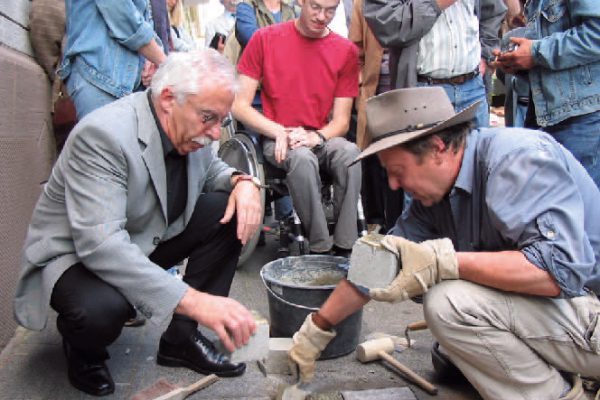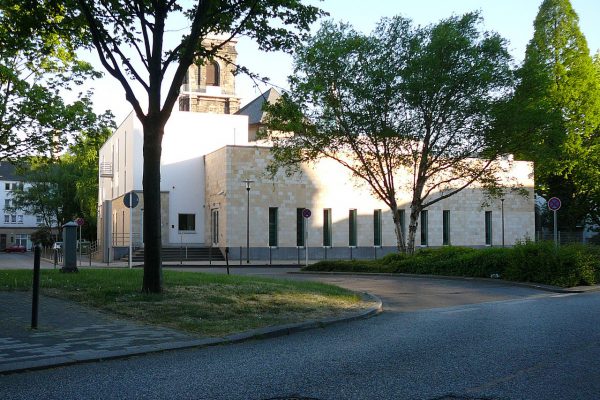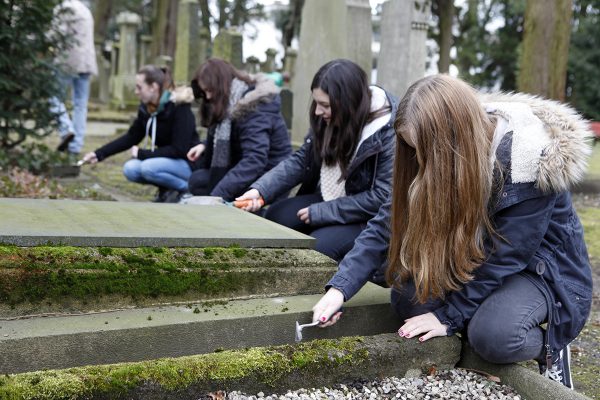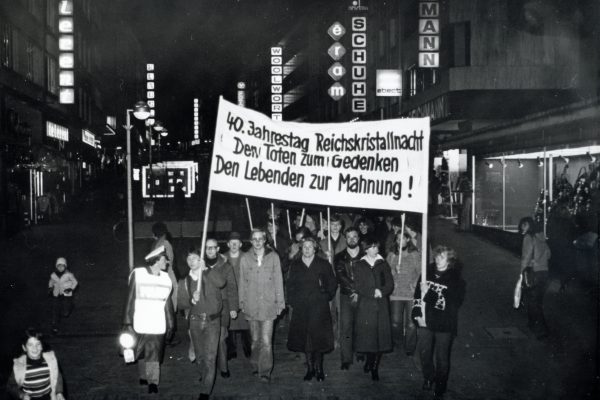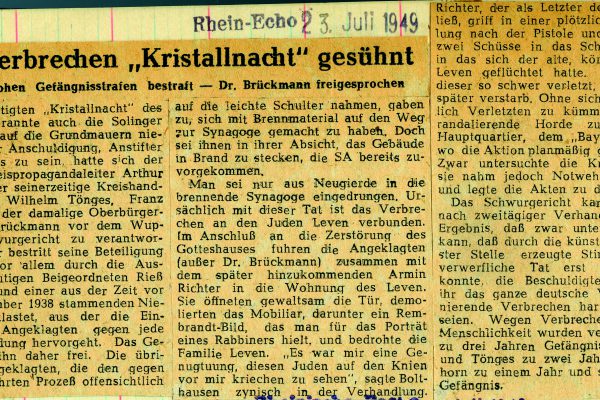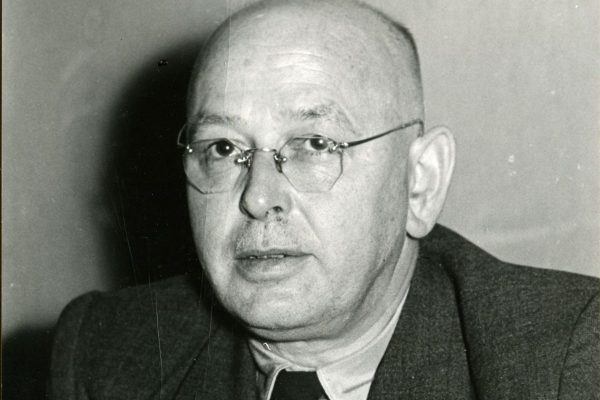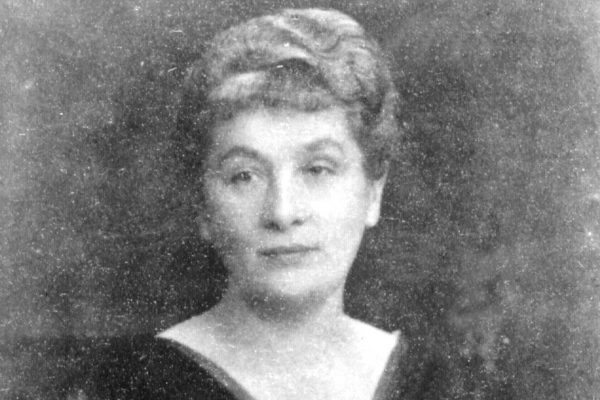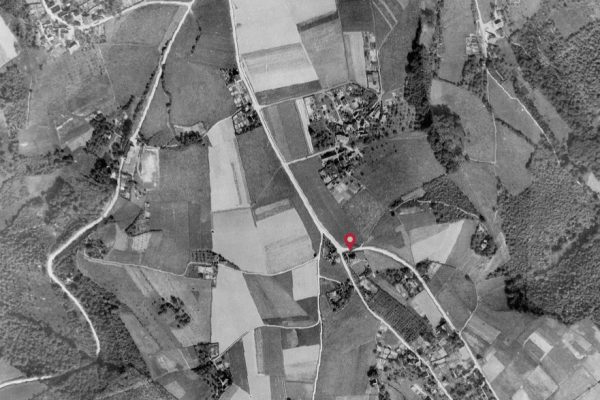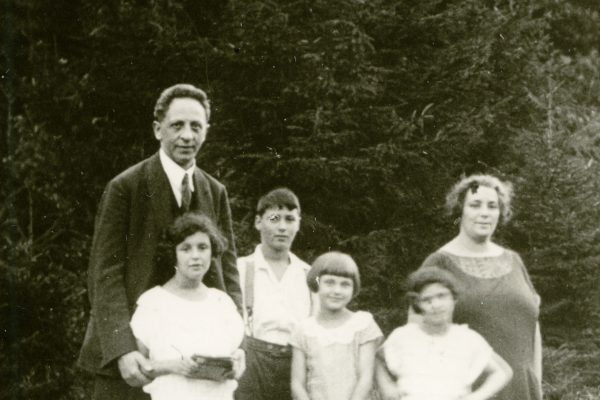In early 2019, the “Arbeitskreis Verfolgung und Widerstand in Solingen 1933–1945” (Working Group Persecution and Resistance in Solingen 1933–1945) campaigned for the establishment of an educational institution and memorial center at the site of the former newspaper Bergische Arbeiterstimme and the scene of the murder of Max Leven in the pogrom night. This is where […]
Installment of the first “Stolpersteine” in Solingen
On May 28, 2004, the first “Stolpersteine” (stumbling blocks) were installed in front of the building at Klemens Horn Strasse 6. Here, the artist Gunter Demnig laid three stones for the murdered members of the Dessauer family: Samuel, Marianne, and Heinz. Born out of an initiative of the “Solingen Appeal”, the “Circle of Supporters of […]
Inauguration of the Bergische Synagogue
In January 1997, the Circle of Friends of the New Synagogue was founded in Wuppertal, a citizens’ initiative that advocated a new building with a community center for the Bergische region. The Protestant regional church supported the project by donating a plot of land near the site of the former Barmer synagogue. On December 2, […]
Twin cities Solingen and Ness Ziona, Israel, and the foundation of the project group Jewish Cemetery
In 1987, the Alexander Coppel Comprehensive School (formerly the Solingen Municipal Comprehensive School) assumed sponsorship of the Jewish Cemetery. Since March 1988, a project group has maintained the gravesites and the grounds on Estherweg. In this way, hundreds of students have already become acquainted with the history and culture of the former Jewish community. The […]
Renaming of Max Leven Gasse in Solingen
On the basis of a citizens’ petition, the Solingen-Mitte district council decided to rename Hohe Gasse as Max Leven Gasse in memory of the former cultural critic of the newspaper Bergische Arbeiterstimme, who was shot here in the pogrom night, and whose fate was in danger of being forgotten. The decision was not a foregone […]
First solemn vigil to commemorate the November pogrom in Solingen
On June 8, 1978, the Solingen City Council resolved to hold a commemorative vigil with the Jewish studies scholar and historian Prof. Ernst Ludwig Ehrlich on the fortieth anniversary of the pogrom night. In November 1978, an exhibition of the city archive on the NS regime was presented in Solingen. On November 9, 1978, a memorial […]
Verdict against the NS perpetrators of the pogrom night in Solingen
Six months after a criminal complaint was filed on August 24, 1946, initial investigations were initiated against the perpetrators of the November 1938 pogroms. In February 1947, the Communist newspaper Freiheit pointed out in an article titled “The Murderer Is Among Us” that one of the men who had been involved in the murder of […]
The end of the war in Solingen
On April 17, 1945 “around 1:00 p.m.,” US Colonel Lansing wrote in his war diary, “the entire region of Solingen and its surroundings was under our control.” The American invasion took place with practically no resistance, since anti-fascist groups had ensured a peaceful handover in several places. Already at 2:00 p.m., Oskar Rieß was appointed […]
Deportation from Solingen to Theresienstadt
“Dear Else, be sensible and think of your fragile nerves; there is no point in getting too excited. To bear the inevitable with dignity is the only thing we can do now; if we’re lucky, we will be able to bear it like our brothers,” Jenny Giesenow wrote in her last letter to her daughter […]
The pogrom on Pfaffenberger Weg in Solingen
Although individual actions against Jews were forbidden, the participants in a training evening of the NSDAP local group Solingen-Dorp let themselves be carried away to a pogrom in the night from July 12 to 13, 1941. After a subsequent drinking bout, some of the men, heavily intoxicated, moved on to the “Judenhaus” (Jewish house) at […]
The Pogrom Night in Solingen
In the Pogrom Night from November 9 to 10, 1938, an SA troop first stormed the synagogue. Another group of high-ranking party officials, members of the city administration, and representatives of the business community joined in and brought sawdust as tinder. The men devastated the interior and set the wooden furnishings on fire with gasoline. […]

